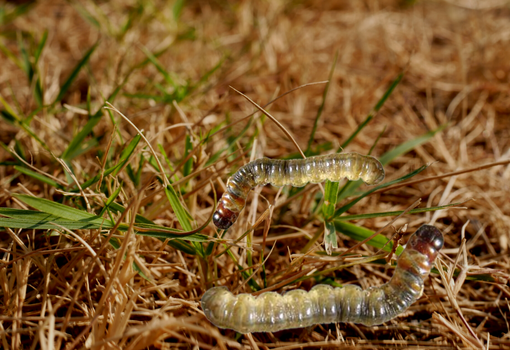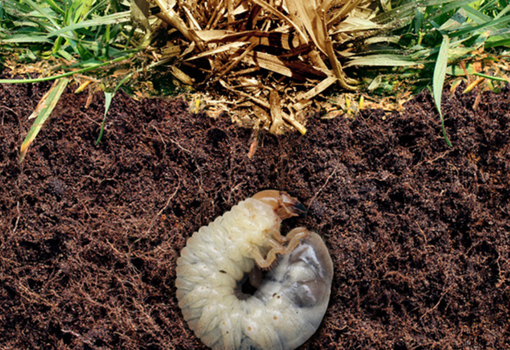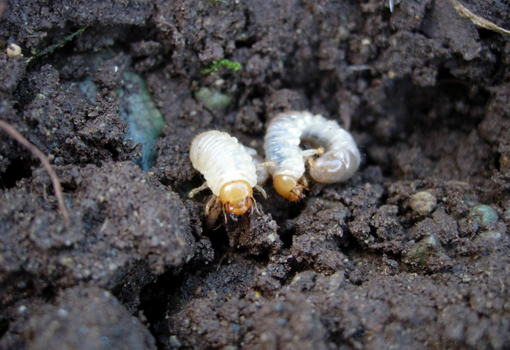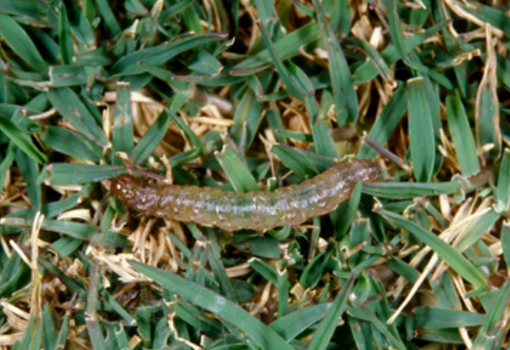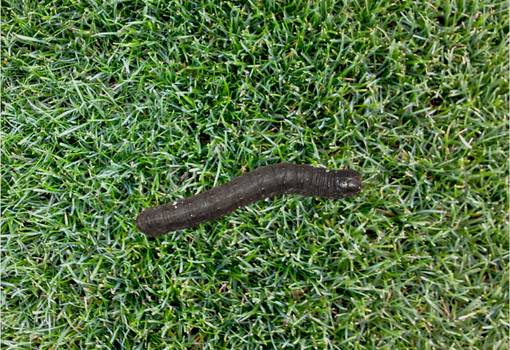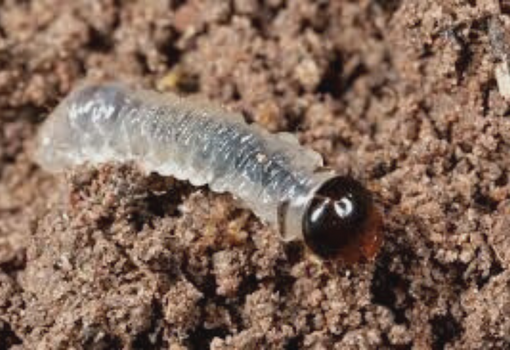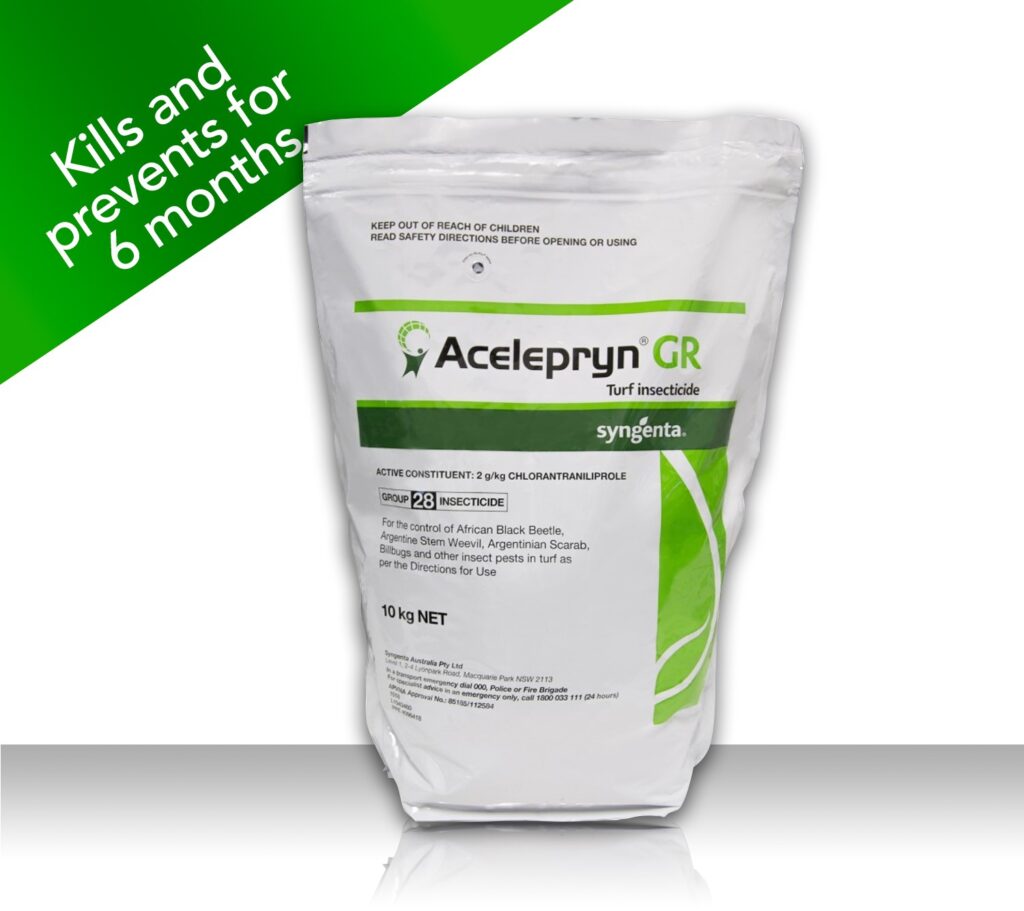Seeing signs of lawn grub damage?
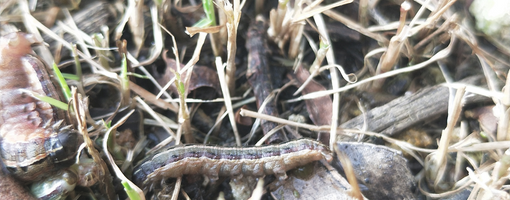
Caterpillar Damage
This type of damage is typical of caterpillars, they strip the lawn of all the leaves and leave the lawn looking very bare. So, don’t be fooled by their small size, if you do see some caterpillars in your lawn, they have huge appetites. The main caterpillars include:
- Porina
- Armyworm
- Cutworm
- Sod Webworm
For caterpillars they tend to be closer to the surface and as a result much easier to find. In fact, there are 3 really easy methods to spot them.
- Go out looking with a torch at night.
- Place a damp towel on a damaged area at night and check underneath in the morning.
- Add 10 mL of dishwashing detergent to 5L of water and apply over 1m2, wait for them to be irritated and come to the surface.
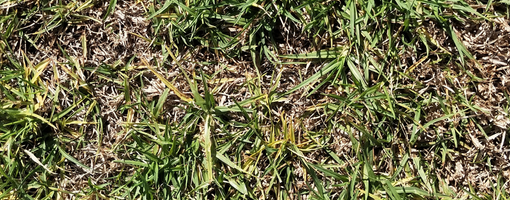
Beetle Larvae Damage
Just to be a little different these little lawn grubs love to hide in the crown (base) of the grass or even lower, in the soil. Here they can evade bird attacks and eat parts of the grass plant that are extremely crucial to its continued survival. These beetle larvae include:
- African Black Beetle
- Tasmanian Grass Grub
- Grass Grub
They are a lot harder to find than other insects as they are much lower in the lawn and soil. That means we must use destructive methods.
- Start by running your hand over the grass, if the blades come out really easy then the stems have been attacked, so Stem Weevils are a likely culprit. Look in the crown of the plant or use the dishwashing liquid method used for caterpillars.
- Next step is to give the grass a little tug, if it comes out you probably have a root feeding insect.
- Grab a spade and dig a hole, look for white grubs around 50-150mm deep in your soil.
It may have been one of these grubs…
Despite there being a huge number of grubs and different ways in which they attack your lawn, fortunately insecticidal technology has caught up.
When it comes to lawn grub control Acelepryn GR is the only product you need to consider:
- It’s gentle on beneficial soil invertebrates like earthworms
- It’s extremely effective on lawn grubs in their most damaging stage
- It breaks the cycle, by knocking out the grubs in their early stage so it prevents egg laying
- It’s unscheduled, so it is great for use on home lawns
In short, it’s our go to, for a reason.
Read More
Lawn grubs can be a major problem for homeowners and can lead to the death of entire lawns if left unchecked. In this blog, we will discuss lawn grub control using Acelepryn, a highly effective insecticide that can help prevent and treat lawn grub infestations.
Acelepryn is a systemic insecticide that is applied to the soil and absorbed by the roots of the grass. It is then transported throughout the plant, making it an effective tool for controlling lawn grubs. Acelepryn works by targeting the nervous system of the grubs, causing paralysis and death. This insecticide is very effective and can kill grubs within 24 hours of application.
One of the advantages of using Acelepryn for lawn grub control is its low toxicity to other non-target organisms such as birds, bees, and other beneficial insects. It is also much less toxic to humans and pets than other insecticides, making it a safe option for homeowners.
When it comes to applying Acelepryn for lawn grub control, timing is key. It is recommended to apply the insecticide in the spring or early summer when grubs are in the early stages of their life cycle. This will ensure that the grubs are targeted before they can cause significant damage to your lawn.
To apply Acelepryn, you will need a spreader. It is recommended to use a drop spreader as it will allow for more precise application. Follow the instructions on the label carefully, as the rate of application will vary depending on the size of your lawn and the severity of the grub infestation. It is important to water the lawn thoroughly after applying Acelepryn to ensure that the insecticide is absorbed into the soil.
It is also important to take proper care of your lawn after applying Acelepryn. This includes mowing regularly and avoiding heavy foot traffic on the lawn. Overuse of the lawn can cause stress to the grass, making it more vulnerable to grub damage. Additionally, it is recommended to fertilize your lawn regularly to promote healthy growth and reduce the risk of grub damage.
Another important factor to consider when using Acelepryn for lawn grub control is the environment. If you have a lawn that is surrounded by wooded areas or fields, it is likely that grubs will continue to migrate into your lawn from these areas. In such cases, it may be necessary to apply Acelepryn on an ongoing basis to ensure that grubs are kept under control.
In conclusion, Acelepryn is a highly effective and safe option for controlling lawn grubs. It works by targeting the nervous system of the grubs, causing paralysis and death. By following the instructions on the label and taking proper care of your lawn, you can effectively prevent and treat grub infestations, ensuring that your lawn stays healthy and beautiful.

